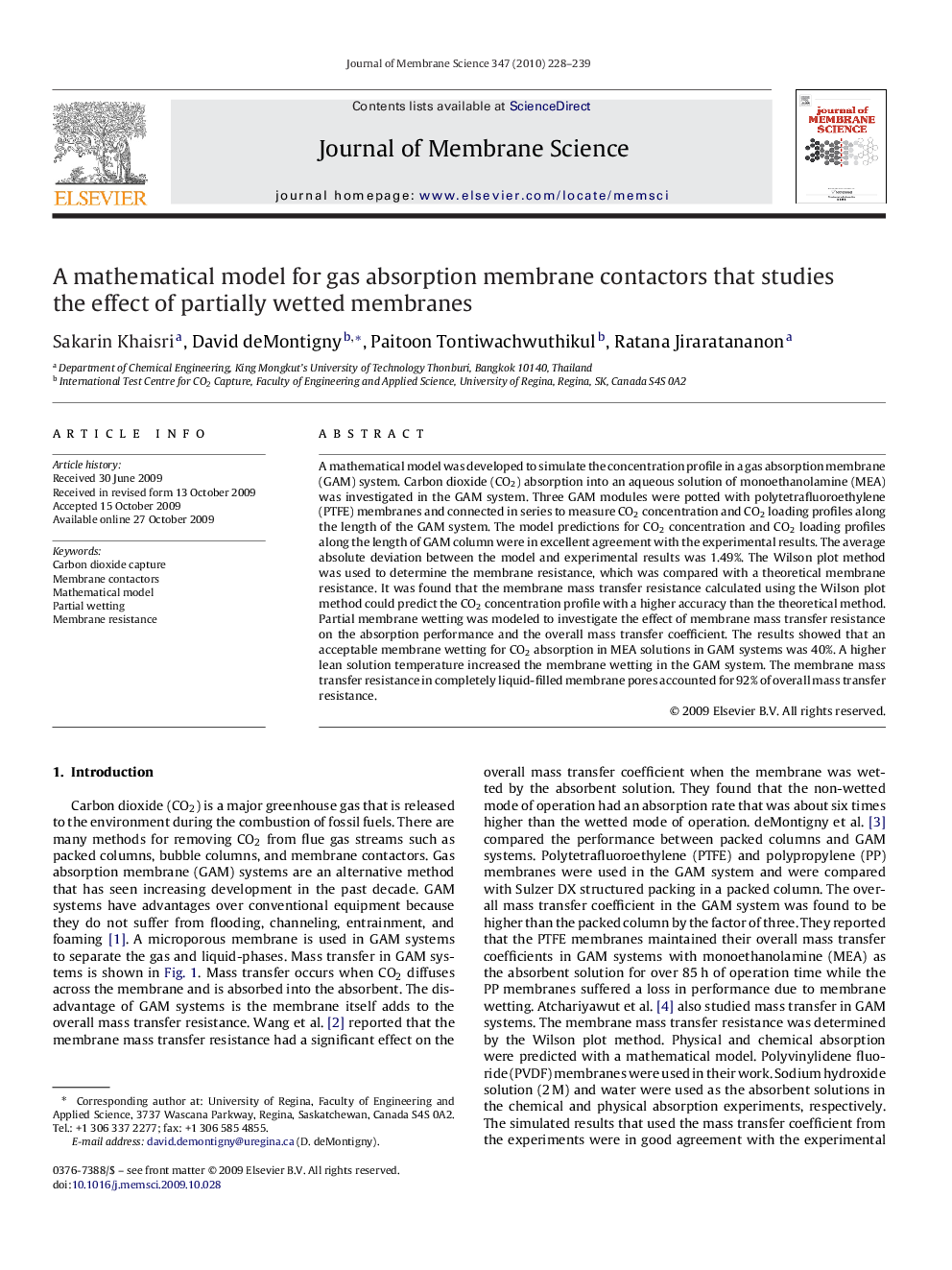| Article ID | Journal | Published Year | Pages | File Type |
|---|---|---|---|---|
| 636685 | Journal of Membrane Science | 2010 | 12 Pages |
A mathematical model was developed to simulate the concentration profile in a gas absorption membrane (GAM) system. Carbon dioxide (CO2) absorption into an aqueous solution of monoethanolamine (MEA) was investigated in the GAM system. Three GAM modules were potted with polytetrafluoroethylene (PTFE) membranes and connected in series to measure CO2 concentration and CO2 loading profiles along the length of the GAM system. The model predictions for CO2 concentration and CO2 loading profiles along the length of GAM column were in excellent agreement with the experimental results. The average absolute deviation between the model and experimental results was 1.49%. The Wilson plot method was used to determine the membrane resistance, which was compared with a theoretical membrane resistance. It was found that the membrane mass transfer resistance calculated using the Wilson plot method could predict the CO2 concentration profile with a higher accuracy than the theoretical method. Partial membrane wetting was modeled to investigate the effect of membrane mass transfer resistance on the absorption performance and the overall mass transfer coefficient. The results showed that an acceptable membrane wetting for CO2 absorption in MEA solutions in GAM systems was 40%. A higher lean solution temperature increased the membrane wetting in the GAM system. The membrane mass transfer resistance in completely liquid-filled membrane pores accounted for 92% of overall mass transfer resistance.
